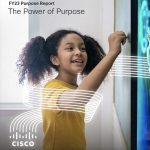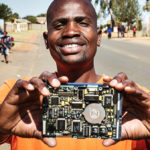If you look around and think everyone has a mobile phone, you’re right. There are almost as many mobile subscriptions (6.8 billion) as there are people in the world (7.1 billion), according to the International Telecommunication Union.
Even in developing countries, the mobile penetration rate (the number of mobile phone numbers within a specific population) is 89 percent. Between 2011 to 2016, the number of mobile phones in Africa is expected to double from 500 million to 1 billion–nearly the entire population. But how are we all using our mobile phones?
What we’re learning is that a mobile phone can transform someone’s life, especially for underserved populations and/or those living in remote locations. They enable financial inclusion for the 1.8 billion people with access to a phone but not a bank. They provide farmers with information on market prices and weather reports, and they link micro and small entrepreneurs to markets and potential buyers. And, they provide mothers with important information to keep themselves and their children healthy. All this relevant and actionable information is getting to people who aren’t able to access this type of information via the Internet or in person.

But we’re also learning that organizations — large, for-profit corporations and small, nonprofit social enterprises alike — are using mobile technology to operate better and smarter. Organizations are using mobile phones to gather real-time data that help them make informed business decisions and that yield social impact.
Let me introduce you to two organizations that have developed innovative technology tools that are driving this double bottom line business and social impact.
Grameen Foundation and Good World Solutions are two organizations that Cisco supports with our resources of cash, networking technology, and expertise. Both are committed to economic empowerment of underserved populations – by helping individuals and families access the skills and information they need to become economically self-sufficient.
Recently I moderated a session at the Social Innovation Summit (SIS) with representatives from both organizations about how the mobile technology tools they have developed are generating value for both business and society.
Giving Workers a Voice
Through its mobile-based Labor Link program, Good World Solutions helps businesses “pull” information from factory workers on working conditions and also “push” information to them on health, safety, education, and financial literacy.
Good World Solutions Director Heather Franzese says mobile can “give workers a voice and give companies real-time data that is actionable about their global workforce.”
“The people who are growing your food, making your clothes, and assembling your electronic devices are often poor, low-wage workers around the world who don’t have Internet access. The way we are able to connect with them is through mobile,” Heather said during our SIS panel. “On the other hand, you’ve got companies investing significant resources to police their global workforce and check up on factory working conditions or farms conditions, but they are not getting reliable information.”
Labor Link enables companies to collect reliable information by directly surveying their workers, and they can use that information to make improvements to their supply chain operations. At the same time, it provides workers with a voice — individually and collectively — by having an anonymous tool to provide feedback.

Marks & Spencer, a UK food and merchandise retailer, used Labor Link to help improve financial literacy among factory workers in India so they are better equipped to make smart financial decisions. The company distributed simple multiple-choice surveys to thousands of employees through their mobile phones, asking questions like “Do you have a bank account?” and “Do you have money saved?”
With the results of the survey, Marks & Spencer was able to target its training to the specific needs of workers. By the end of the first phase of the program, the company reported a 33 percent increase in the number of workers with bank accounts.
This program obviously benefited the workers by making them more financially savvy and improving their capacity to save. And it benefited Marks & Spencer by generating data that helped them adapt the training to the needs of local workers and make sure their investment was having the desired effect.
Data for Business Intelligence
Grameen Foundation supports organizations working to alleviate poverty. It does this by providing tools and services that can increase their efficiency, scale, and impact. One of these tools is TaroWorks, a mobile enabled tool with a cloud-based back end. In non-tech lingo, this means field-based workers can gather and submit data through a mobile phone, providing real-time intelligence to their home offices.
One organization using TaroWorks is Honey Care Africa, a social enterprise that promotes sustainable beekeeping and economic development by providing microfinance, training, and other services to bee farmers.

Honey Care field workers visit bee farmers monthly to monitor and ensure the health of the hive. Providing “continuity of care” is critical, so field agents must be able to refer back to information collected during the previous visit. Additionally, Honey Care needs to be able to locate and track the progress of each hive in their honey supply to meet buyer demand.
Using TaroWorks, Honey Care has greater visibility into its expected honey supply and can better manage its field staff to ensure hive health issues are promptly resolved. This benefits not only Honey Care, but the bee farmers it works with.
VisionSpring is another social enterprise that uses TaroWorks for better business and social impact. VisionSpring fights poverty by selling affordable eyeglasses to the poor, enabling them to work and learn. Why reading glasses? Studies of the economic impact of reading glasses in India showed a 35% increase in individual productivity and 20 percent increase in individual monthly income.
Historically it has been too difficult or too expensive for Vision Spring to get good data about its customers. But now, through mobile phones, TaroWorks, and other tools, VisionSpring collects data that can be used to improve its products and services.
Mobile is helping these small social enterprises generate “classic market information and making it available at the base of the pyramid,” Grameen Foundation Vice President of Poverty Tools and Insights Steve Wright said during the SIS panel.
I have been managing Cisco’s investments in economic empowerment programs for nearly 5 years. We knew there was great potential for mobile phones. Now we are seeing first-hand how businesses are using mobile phones to collect the data they need to make strategic business decisions, and how mobile phones are helping underserved populations access the critical skills and empowering information they need to make informed decisions for themselves and their families, and move toward economic self-sufficiency.
Mobile phones are helping us do work that is both good for business and good for the world.
Please watch the 30-minute SIS panel discussion with Heather and Steve. Once you start the recording, just advance to minute 17.


CONNECT WITH US